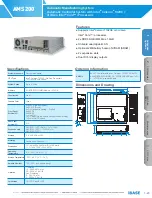
172-65473MA-03 (GT5C PowerTrap) 17 Jul 2019
16
The relation between the interval of operation T
c
(seconds) and the amount of
inflowing pumped medium (Q or Q
p
) can be roughly determined using the
following formula:
T
c
= 5,000/Q
Q = 5,000/T
c
Q: amount of inflowing pumped medium (kg/h)
T
c
= 11,111/Qp
Q
p
= 11,111/T
c
Q
p
: amount of inflowing pumped medium (lb/h)
(2) If an error such as a leak or water hammer occurs after beginning PowerTrap
operation, shut off the valves immediately in the following order:
valve [Vm] on motive medium supply pipe
pumped medium inlet valve [Vi]
pumped medium outlet valve [Vo]
valve [Ve] on exhaust pipe
(3) Whenever any type of malfunction is suspected in the PowerTrap, refer to the
“Troubleshooting” section.
Periodic Inspection and Diagnosis
There are two types of periodic inspection: the visual inspection and the disassembly
inspection.
(1) Visual Inspection
As a general rule, this inspection should be performed at least once every 3
months.
Check the following items:
a) There should be no leakage from the PowerTrap or from any of the connections.
b) The PowerTrap unit should make continuous sound
during trapping operation
(equipment side pressure > back pressure).
c) The PowerTrap unit should be operating cyclically without continuous sound in
the motive medium supply pipe or the exhaust pipe during the pumping
operation (equipment side pressure
≤ back pressure).
d) Pumped medium should not accumulate in the (steam-using) equipment, and
the temperature of the equipment should not be abnormally low.
e) There should not be any abnormal noise (such as water hammer) from the
pumped medium outlet pipe or the pumped medium recovery line when the
PowerTrap operates.
(2) Disassembly Inspection
Refer to the “Disassembly/Reassembly” section.
As a general rule, this inspection should be performed at least once every 2 years.
When inspecting the interior of the unit, check the following items:
a) Make sure the snap-action unit moves up and down smoothly as the float rises
and falls.
b) Make sure the valve of the trap unit moves up and down smoothly as it opens
and closes.
c) Make sure the intake/exhaust valves move up and down smoothly.
d) Make sure the float is not damaged and is not filled with water.
e) Make sure all nuts and bolts are properly installed and fastened.
f) Check to make sure that there is no foreign matter sticking to the shafts and
levers of any of the units, and make sure there is no abnormal wear.
When reassembling, be sure to replace the body and cover gaskets with new
gaskets if damaged.
Also, replace any parts that are broken or show serious wear.
If any parts require replacement, refer to the “Replacement Parts” List.
















































